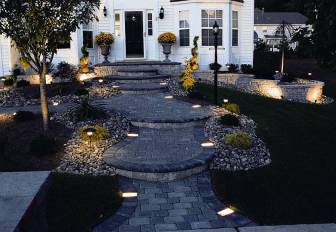
Commercial Patio Heater
Patio Heaters Provide Heat to Outdoor Restaurants and Bars
As of November 2009, 35 states in the U.S. have enacted statewide bans on smoking in most, if not all, enclosed public places, including restaurants and, in many cases, bars. During the summer, smokers can sit outside on patios, decks, or in gardens. But when the weather turns cold, many smokers may prefer to stay home rather than dine out, which can seriously damage the restaurant business. In response to this problem, more and more owners and managers in the restaurant industry are investing in outdoor patio heaters. By using patio heaters, restaurants and bars can help their smoking customers feel welcome and warm and prevent drops in their revenues during the colder seasons.
Patio Heater Fuel Types
There are three fuel types used to power patio heaters: natural gas, propane, and electricity. For restaurants, natural gas could be the best choice because the heater hooks up to the gas lines and never needs refueling. Natural gas heaters cannot be moved, however. If you plan to move the heater, for catering or other purposes, propane heaters may be the best choice. Propane patio heaters run on tanks and can be set up in about 10 minutes.
Patio Heater Safety Features
Of course, safety is always a major concern for businesses. Many patio heaters are built with this concern in mind, so they come with excellent safety features. One important feature is an automatic emergency shut off. If the heater is turned over, or even hit too hard, it automatically turns off. Another common feature is a piezo electric starter, which does not require a pilot light.
Choosing Between Various Patio Heater Options
When looking through the various commercial grade heaters, one of the most important considerations is the heater’s power, which is rated in British Thermal Units (BTUs). The average heater rates at about 45,000 BTUs, enough to make a 20 foot heat circle. Keep in mind the size of your outdoor eating and gathering space; this will determine if more than one patio heater would be needed to keep your customers cozy. Another factor to consider is style. The heater should fit comfortably with the decor of your establishment, whether traditional or modern. Some models, for example, are reminiscent of a classic iron lamp post and bring a traditional elegance to the environment. Other models offer a more sleek, modern, even futuristic appearance.
A Couple of Tips
If you plan on moving the heater, be sure to get a model with wheels. The wheels are often hidden, and so they will not affect appearance.
Having too much wind where you put the heater can adversely affect its performance. This problem can be solved rather easily, though, by using screens, shades, or other wind breakers.
An Asset to Restaurants
Patio heaters have undoubtedly proved their usefulness to restaurants and bars. Fortunately, as their popularity has increased in recent years, they have become much more affordable. So it is now easier than ever to use patio heaters to help your business maintain old patrons and gain new ones.



